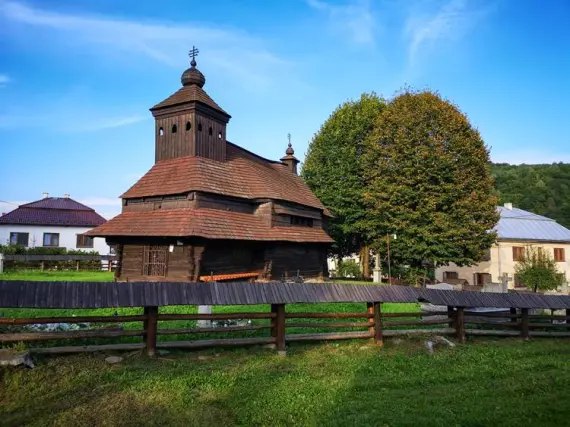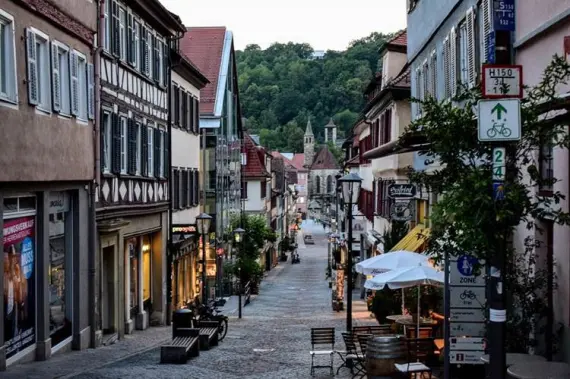Bus from STALOWA WOLA to GIESSEN. Current connections
STALOWA WOLA

Stalowa Wola is a city of nearly 60,000 people in Subcarpathian province. Historically, it is a very young city. It was established in 1938 as part of the Central Industrial District plan, building the Southern Works (mainly related to the engineering industry) near the village of Plawo between the towns of Nisko and Rozwadów. Before the war, some of the plants were built, as well as near-factory settlements called Stalowa Wola. Over the past several decades, Stalowa Wola has developed and the small factory settlement has grown into a medium-sized city, almost rivalling the largest in the province - Rzeszów and Przemyśl.
Stalowa Wola offers visitors many attractions. Despite its short history as a city, it has several monuments related to the Lubomirski family on its territory, and you will also find interesting modernist architecture. While in the city, it is additionally worthwhile to enjoy outdoor recreation in one of the specially arranged parks and green spaces. You can take a stroll through the well-landscaped City Park or the Zimna Woda Park and visit an interesting exhibition of paintings by the leading artist of Young Poland, Alfons Karpinski. The Museum of the Central Industrial District, with many interesting multimedia exhibitions and exhibits related to the industry, is also an interesting facility, worth a visit.
Stalowa Wola can be reached by train from many Polish cities - directly from Warsaw, Cracow or Lublin, among others. There is also a bus station in the city, which will take you to many surrounding cities and Poland's largest cities, as well as cities beyond our borders. If you are interested in Stalowa Wola - a bus or train may just be the best choice for an interesting trip.
Stalowa Wola is a city of nearly 60,000 people in Subcarpathian province. Historically, it is a very young city. It was established in 1938 as part of the Central Industrial District plan, building the Southern Works (mainly related to the engineering industry) near the village of Plawo between the towns of Nisko and Rozwadów. Before the war, some of the plants were built, as well as near-factory settlements called Stalowa Wola. Over the past several decades, Stalowa Wola has developed and the small factory settlement has grown into a medium-sized city, almost rivalling the largest in the province - Rzeszów and Przemyśl.
Stalowa Wola offers visitors many attractions. Despite its short history as a city, it has several monuments related to the Lubomirski family on its territory, and you will also find interesting modernist architecture. While in the city, it is additionally worthwhile to enjoy outdoor recreation in one of the specially arranged parks and green spaces. You can take a stroll through the well-landscaped City Park or the Zimna Woda Park and visit an interesting exhibition of paintings by the leading artist of Young Poland, Alfons Karpinski. The Museum of the Central Industrial District, with many interesting multimedia exhibitions and exhibits related to the industry, is also an interesting facility, worth a visit.
Stalowa Wola can be reached by train from many Polish cities - directly from Warsaw, Cracow or Lublin, among others. There is also a bus station in the city, which will take you to many surrounding cities and Poland's largest cities, as well as cities beyond our borders. If you are interested in Stalowa Wola - a bus or train may just be the best choice for an interesting trip.
GIESSEN

Giessen is located in the central part of Germany, in the state of Hesse. Its unique location on the east bank of the Lahn River makes it an important transportation and commercial point in the region. The city lies at the southern end of the German Highlands, which contributes to its diverse landscape. The city's surroundings feature hilly terrain and extensive forested areas that are part of the broader forest complex of the Mittelhessen region. The Lahn River, which flows through Giessen, is an important part of the landscape, and its presence contributes to the local microclimate and provides picturesque views.
Giessen's surroundings, with its picturesque landscapes, proximity to the Lahn River and varied terrain, make the city an attractive place to live and work. In addition, the presence of a university and educational institutions gives the city a dynamic character and attracts students and researchers from all over the world.
Giessen bus - how to get to Giessen quickly?
Giessen is well connected with the rest of Germany thanks to a well-developed transportation network. The city is close to important transportation routes, including the A485 and A5 highways, which connect it to major urban centers such as Frankfurt and Marburg. These connections make Giessen easily accessible to both travelers and regional residents. Among others, tourists choosing to travel to Giessen can take advantage of this. The bus offered by our company Sindbad provides comfortable, safe and efficient transportation to Giessen from different parts of Poland. We guarantee attractive ticket prices, as well as all customer amenities, such as comfortable seats, air conditioning and a toilet. We encourage you to familiarize yourself with the offer of schedules to Giessen!
Giessen is located in the central part of Germany, in the state of Hesse. Its unique location on the east bank of the Lahn River makes it an important transportation and commercial point in the region. The city lies at the southern end of the German Highlands, which contributes to its diverse landscape. The city's surroundings feature hilly terrain and extensive forested areas that are part of the broader forest complex of the Mittelhessen region. The Lahn River, which flows through Giessen, is an important part of the landscape, and its presence contributes to the local microclimate and provides picturesque views.
Giessen's surroundings, with its picturesque landscapes, proximity to the Lahn River and varied terrain, make the city an attractive place to live and work. In addition, the presence of a university and educational institutions gives the city a dynamic character and attracts students and researchers from all over the world.
Giessen bus - how to get to Giessen quickly?
Giessen is well connected with the rest of Germany thanks to a well-developed transportation network. The city is close to important transportation routes, including the A485 and A5 highways, which connect it to major urban centers such as Frankfurt and Marburg. These connections make Giessen easily accessible to both travelers and regional residents. Among others, tourists choosing to travel to Giessen can take advantage of this. The bus offered by our company Sindbad provides comfortable, safe and efficient transportation to Giessen from different parts of Poland. We guarantee attractive ticket prices, as well as all customer amenities, such as comfortable seats, air conditioning and a toilet. We encourage you to familiarize yourself with the offer of schedules to Giessen!
© 2025 Sindbad
Technical support, assistance, payments: Sindbad IT
© 2025 Sindbad
Technical support, assistance, payments: Sindbad IT
